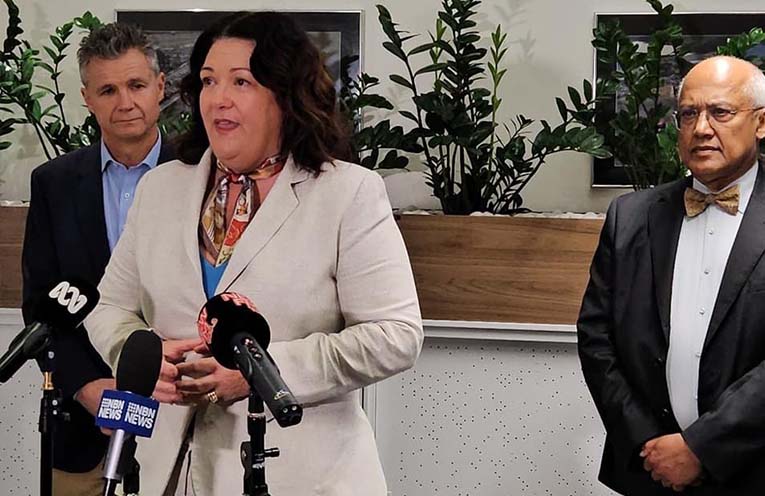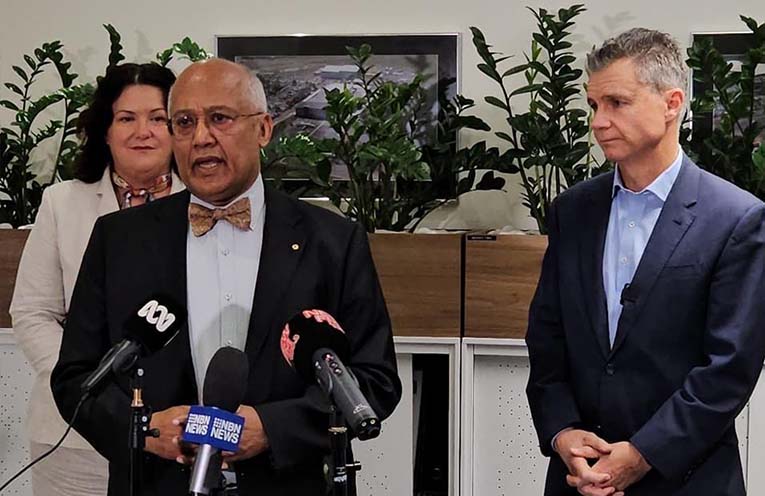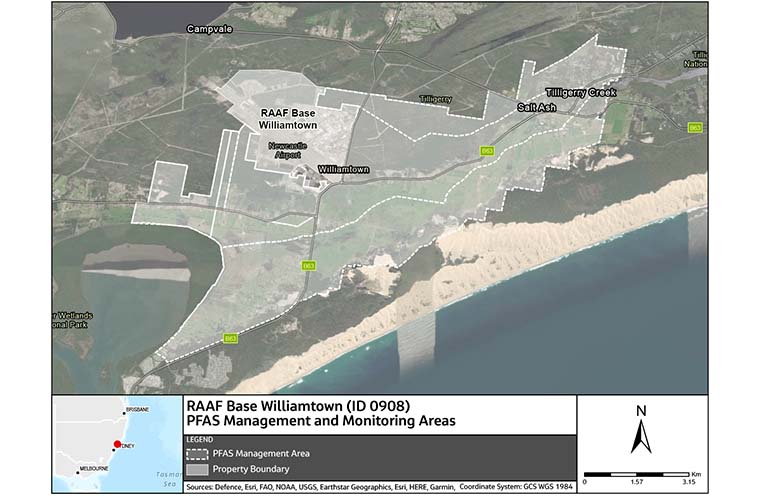
AN independent review has been announced of land usage around Australian Defence Force bases impacted by per-and poly-fluoroalkyl substances (PFAS) contamination.
The review, led by Mr Jim Varghese AM, will focus on land around RAAF Base Williamtown, as well as the Army Aviation Centre Oakey in Queensland and RAAF Base Tindal in the Northern Territory.
 Advertise with News of The Area today.
Advertise with News of The Area today.It’s worth it for your business.
Message us.
Phone us – (02) 4981 8882.
Email us – media@newsofthearea.com.au
The Assistant Minister for Defence, the Hon. Matt Thistlethwaite MP said the review’s findings would inform government on how to best help communities affected by PFAS contamination.
“I have spoken directly with communities impacted by PFAS contamination to hear their concerns,” Mr Thistlethwaite said.
“They want solutions.
“I would like to thank each community for this ongoing and productive consultation.
“We know that Defence’s historic use of PFAS has resulted in some diminished opportunities for land uses around some Defence bases.”
Working in consultation with Commonwealth, State, Territory and local governments, affected communities and industry, the review will explore alternative uses for impacted land around the three key Defence bases.
An opportunity will be provided for other communities affected by Defence’s historic use of PFAS to make submissions to the review.
This includes identifying opportunities where adjacent land may be repurposed to the mutual benefit of Defence and surrounding areas.
A public consultation process and hearing schedule will be released in coming weeks, with the review expected to be finalised in early 2024.
“This is an independent review and Defence cannot preempt the outcomes,” a Defence spokesperson told News Of The Area on the potential of compensation for landowners impacted by PFAS contamination.
“The terms of reference will guide Mr Varghese’s work.
“The terms of reference are focused on land use options and re-purposing of land, and considering decision-making for land use and zoning in the context of per-and poly-fluoroalkyl substances (PFAS) contamination.”
PFAS are man-made chemicals found in a range of products, including firefighting foam and non-stick cookware.
There are many different types of PFAS chemicals, all of which last for a long time in the environment and in the bodies of people who are exposed.
Despite many international studies looking into PFAS, there is uncertainty about their health effects in people.
In October 2018, Defence completed investigations into PFAS contamination on and around RAAF Base Williamtown.
The investigations found that PFAS is mostly concentrated in areas where firefighting foams were previously used, stored or disposed of.
The PFAS in these locations can be found in soil and in water flowing through the source areas.
PFAS moves in surface water flowing through drains and creeks or groundwater that flows underground through soil and rock.
In May 2018, the Federal Government’s PFAS Expert Health Panel released their report into the health effects of PFAS.
The Panel concluded that there is no current evidence to suggest an increase in overall health risk related to PFAS exposure, however also said health effects cannot be ruled out.
On this basis, it recommended that residents within the Primary Management Zone should not use groundwater, bore water or surface water for any purpose.
The panel also advised that home grown foods should not be consumed.
In 2021, findings were released from an epidemiological study examining the potential health impacts of PFAS in three Australian communities, including Williamtown.
The research was led by the Australian National University and funded by the Department of Health.
The study examined the three same communities that the Federal Government’s new review will look at – Katherine in the Northern Territory, Oakey in Queensland and Williamtown in New South Wales.
Overall, there was clear evidence of elevated blood serum concentrations of PFAS in residents and workers in the PFAS-affected communities, and of increased psychological distress in the three exposed communities.
“The main factors associated with people having higher levels of PFAS in their blood were the length of time they had lived in the town, whether they regularly drank bore water or ate locally-grown foods and if they had worked with firefighting foams in the past,” study lead Professor Kirk from ANU said.
The report showed that one third of people reported being ‘very’ or ‘extremely’ concerned about their health, including one in five people who had serious concerns about their mental health.
“We did identify an association between higher PFAS levels in blood and higher cholesterol, which has been reported in other studies internationally,” Kirk said.
By Doug CONNOR


